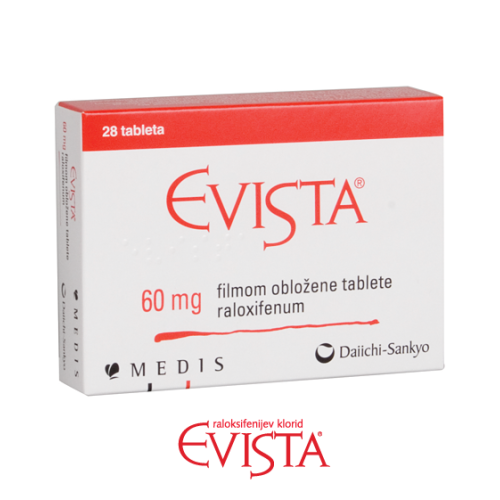Evista (Raloxifene) 60 mg
- Brand: Daiichi Sankyo
- Product Code: Evista (Raloxifene) 60 mg
- Availability: In Stock
-
$48.00
Manufacturer: Daiichi Sankyo
Pharmaceutical name: Raloxifene Hydrochloride
Pack: 1 pack (28 tabs (60 mg))
Evista is categorized as a selective estrogen receptor modulator. It acts as an agonist in non-reproductive tissues and as an antagonist in reproductive tissues. The active ingredient enhances the levels of binding globulin hormones (including sex hormones, thyroxine, and corticosteroids) while simultaneously increasing their total blood concentration without raising the free fraction.
Many women experience significant progressive illnesses, such as post-menopausal osteoporosis, after the age of 50-55. This condition arises due to the hormonal imbalance (specifically a deficiency in estradiol, which is essential for calcium enrichment in bones), resulting in inadequate mineral supply to the body. Consequently, bones become thinner and less dense, making them susceptible to fractures even under minimal stress.
The typical dosage for Evista is one tablet (60 mg of Raloxifene) daily for long-term treatment, which should be tailored to the individual. This dosage can be taken at any time of day, irrespective of meals. Only adults (18 years and older) are permitted to take Evista regularly. It is not suitable for women who are pregnant or breastfeeding, regardless of their age. Dosages may need adjustment for patients with liver or kidney issues. Consult a healthcare professional for dosage modification regarding Evista. The tablet must be taken whole, without chewing or breaking.
For osteoporosis treatment or prevention with Evista, it is recommended to include vitamin D in the diet. The necessary daily intake of vitamin D during Evista therapy is 400-800 IU.
Long-term treatment is generally required. Women should take Evista in conjunction with calcium supplements. It should not be used alongside estrogen.
Contraindications for Evista use include: hypersensitivity to any components of the medication; thromboembolism; pulmonary embolism; retinal vein thrombosis; deep vein thrombosis; hepatic failure; osteoporosis in men of reproductive age (in women).

